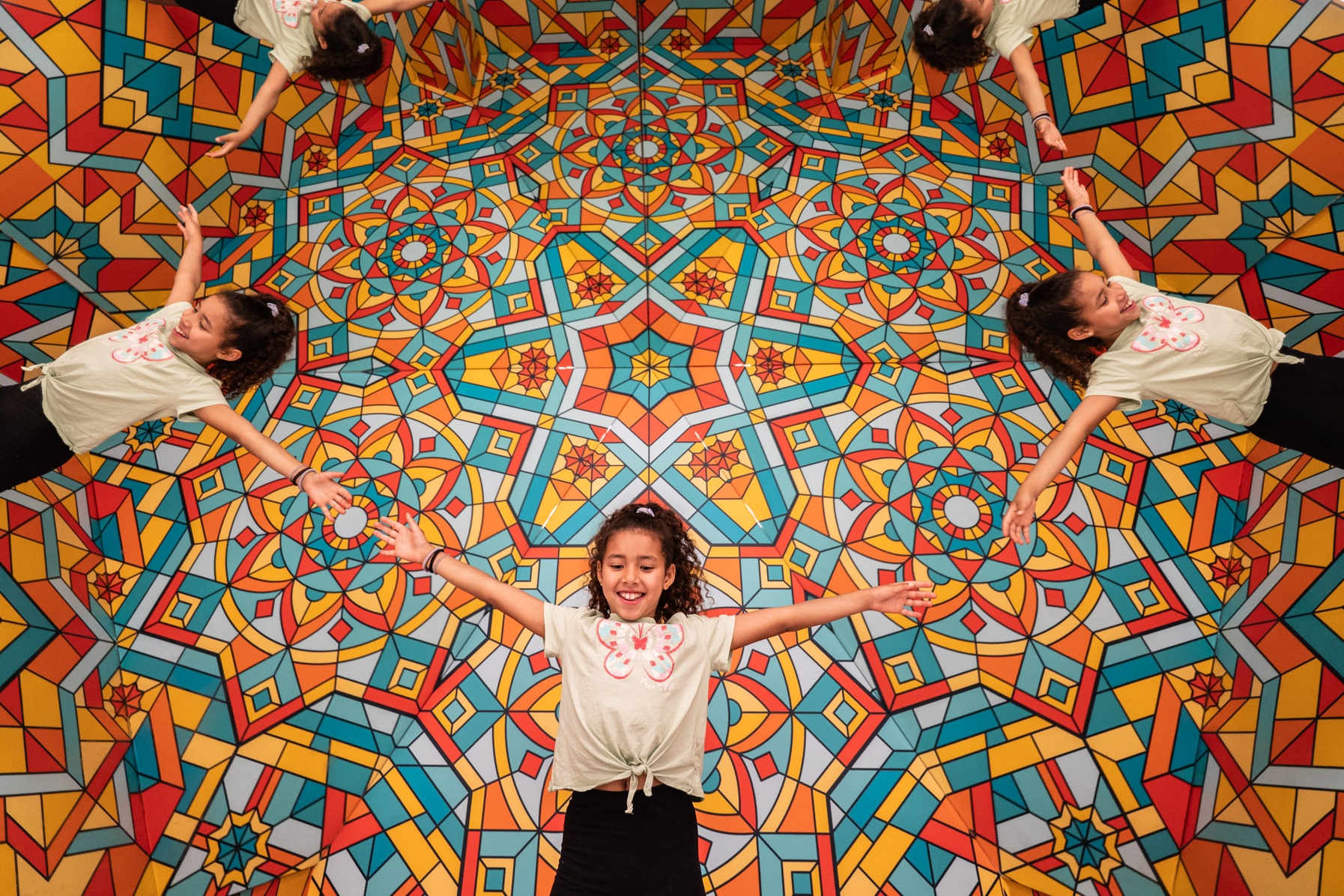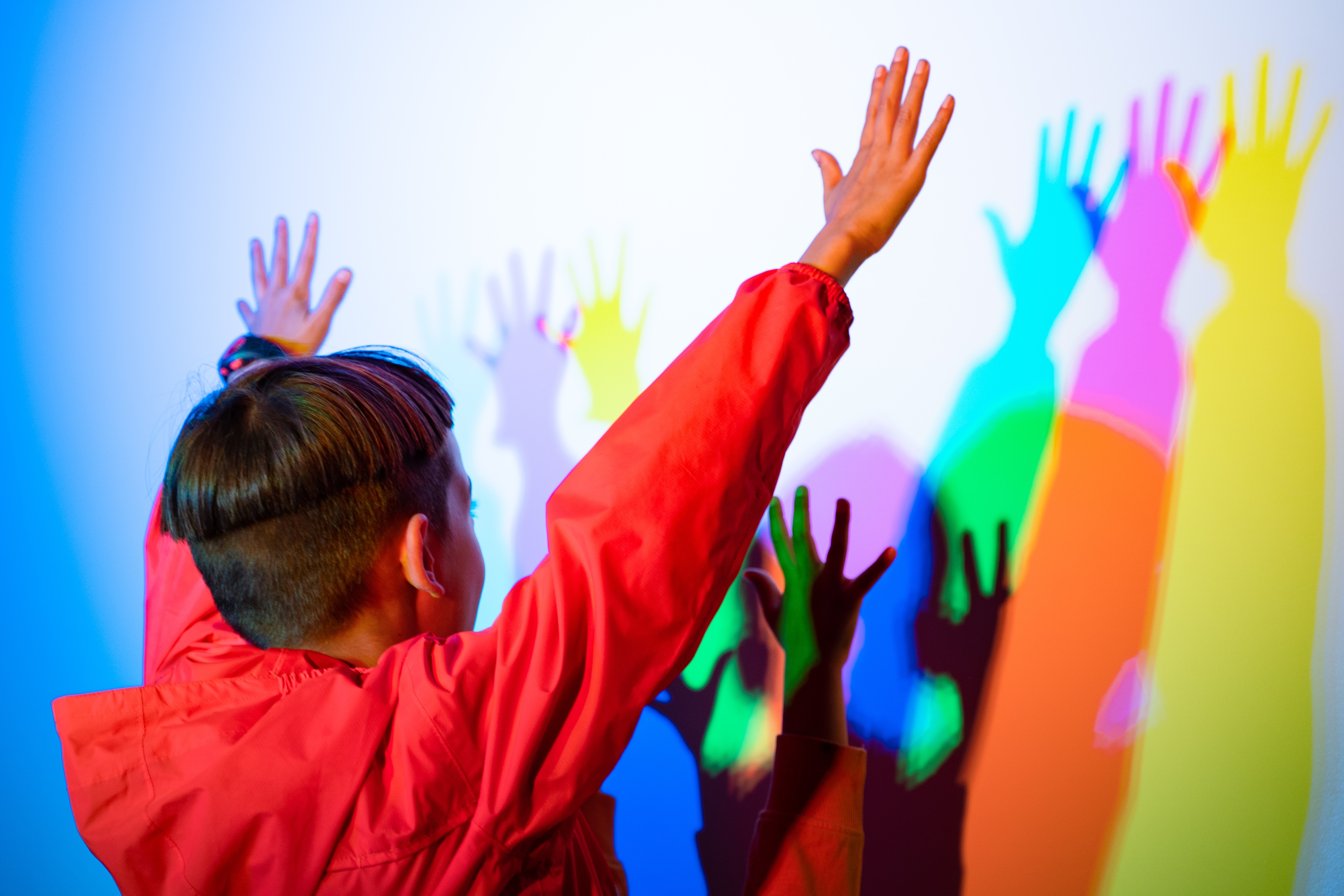Where illusions spark real learning
Bring your students on a journey where science, art, and philosophy collide. At the Museum of Illusions Amsterdam, we transform learning into play, and play into discovery. Unlike traditional museums, we don’t just show knowledge — we let students interact with it.

Why Schools Choose the Museum of Illusions?
Interactive Learning: Pupils don’t just observe — they experience optical illusions, physics in action, and mind-bending perception tricks firsthand. Every exhibit is a doorway into a conversation: Why do our eyes and brain disagree? How do illusions reveal the limits of human perception? What can illusions teach us about art, science, and reality itself?

Cross-Curricular Connections:
- Science: Explore the psychology of perception, the physics of light, and the science behind optical illusions.
- Art: Discover how artists use perspective, geometry, and color to manipulate the eye and challenge reality.
- Philosophy: Spark debate around truth, perception, and what it really means to “see” the world.
Memorable and Fun Experiences: Students leave not only with knowledge, but with unforgettable memories they’ll talk about long after the trip.
Guided Tours & Educational Materials – make it easy for teachers to connect the visit with classroom topics.
Safe & Supervised Environment – designed for interactive learning in small or large groups.
Who is it for?
Our school programmes are suitable for:
- Secondary education – first year to upper years (VMBO, HAVO, VWO)
- Primary education – years 3 to 8
- International classes & bilingual education (materials available in English)
Please note: groups 1 and 2 of primary school are not included in the target group. The content of the museum is too complex and intense for this age group.

We offers a unique, educational and stimulating outing for primary and secondary school classes from 3 to 8. Our museum combines optical illusions, perception and interaction in an environment that perfectly complements subjects such as biology, art, mathematics, philosophy, CKV and mentoring.
Practical information
Duration of Visit
- Average visit: 45 to 75 minutes
- Optional: preparatory/follow-up lesson of 45–60 minutes
Central Location – easy to reach by public transport or school bus.
Group size
- Min: 10 students
- Max: ±30 students per time slot (larger groups possible via split/rotation)
Opening hours
- During regular hours
- By request: exclusive openings outside regular hours
Special School Rates – affordable group tickets for primary and secondary schools.
- Students: Price on request
- Teachers/supervisors: free admission (1 supervisor per 10 pupils)
Invoicing to the school name is possible.
What do other schools say?
“Our students were extremely enthusiastic. They were amazed, but also immediately made connections with biology and art lessons.” – Mr B. Hindriks, Dutch and CKV teacher, Landstede, Zwolle
“We used the visit as a kick-off for an art project about perception. A perfect combination of fun and depth.” – J. Roorda, Dutch teacher, Broklede College, Breukelen
“This is not your standard museum tour. Our students were really challenged to look at things differently — and that led to some great discussions in class.” – Physics teacher, A. Janssen, Terra Nigracollege, Maastricht
Plan Your School Visit
Make your next school trip one that sparks wonder.
Contact us today for school group bookings, lesson materials, and tailored experiences.